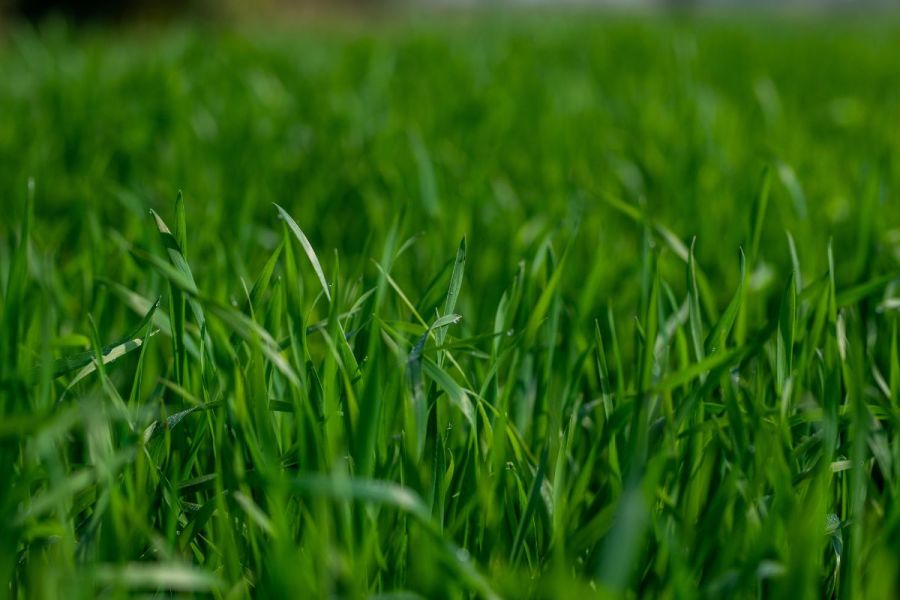With gross margins being squeezed, CPM talks to a grower looking to reduce inputs and finds out how a specialist biostimulants is helping to bolster disease control on the farm.
“It fits well with our objective of reducing fungicide use, especially in the early part of the season.”
By Mike Abram
A cost-squeeze could be coming. There won’t be many, if any, growers who have ever bought fertiliser at such a high price, while spring crop protection products are likely to increase by perhaps 20% and other costs, such as machinery and spares are also rising quickly.
While some growers may have locked into grain prices at or near highs last year, the wheat price fell to a 11-month low of around £220/t in January before recovering to over £230/t last month.

Will Parker says he’s been able to see a lot of trials data on Scyon collected by Hutchinsons and virtually every trial was positive, which he adds is very rare with a biostimulants.
But with AHDB forecasting that it’s unlikely grain prices will return to the highs of last May unless another global incident occurs – a surplus of Russian supply is limiting any gains from developments in Ukraine, strong EU exports and potential US crop damage – gross margins are likely to be under more pressure than last season.
On Will Parker’s 690ha farm near Royston in Hertfordshire, which he farms with his father, that’s going to mean a continuation in trying to reduce inputs where possible, while still maximising yields.
“Yield is still king – I don’t want to sacrifice yield for anything as it’s still what pays the bills,” stresses Will. “But there’s the thought that wheat is going to come down to £200/t while all the input prices are going to carry on increasing, which is obviously going to squeeze margins.
“If you can get with most operations a 0.2-0.3 t/ha yield response, even at £200/t that will pay for a lot of inputs so we’re not being drastic with reductions. But we’re trying to do everything a little bit better, while keeping yields similar or hopefully increasing them.”
It’s a relatively light land farm which means larger areas of winter and spring barley and winter rye are grown than typically seen on many East Anglian farms, alongside winter wheat, oilseed rape and oats. The farm also grows sugar beet and rents land out for potatoes.
Like many, the farm moved from a purely plough-based system in the early 2010s to min-till establishment using a Grégoire Besson Discordon to prepare the land, says Will. “Then in 2016 we bought a John Deere 750A direct drill to go with our Väderstad Rapid and we’ve been steadily moving towards a no-till approach, where we can.”
It was a decision based partly on controlling cost with a desire to eventually reduce the power requirement on the farm, improve soil health and carbon capture and an understanding that government policy is pushing in that direction.
“We pick fields where we think it will work each year – judging it on previous crop performance, whether any damage has been caused to the soil at harvest and looking at soil structure.
“Obviously as the root crops go around the rotation, they need more aggressive cultivation, but over the past two years around 50% of crops have been direct drilled, and generally yields have been within 2-3% of the min-till system, so not significantly different.”
The transition has been easier than perhaps they expected, although this autumn brought a few more challenges, he admits. “We’ve generally had a lot of success, but this year we have had to rip up one winter wheat crop after 80mm of rain fell in a day after we put the pre-emergence herbicide on, washing the chemical to where the seed was, and the crop didn’t come very well.
“I’m going to have to pull back the pre-ems a bit where we do direct drill in future years,” he adds.
OSR establishment was also patchy, which he puts down to using a sulfonylurea herbicide last spring for brome control on some headlands and across some whole fields. “The label advises ploughing before OSR. We’d always got away with it in the past but because of the drought, the residues had never washed away and without any cultivations, wherever we’d used it the OSR didn’t come this autumn.
“In future years we’ll definitely be a bit more careful where we use graminicides on the wheat where OSR is following.”
The farm has access to a limited amount of horse muck from an on-farm livery and locally sourced chicken manure, says Will. “We have about enough to spread on about 40-50ha each year. I’d ideally like to increase that to a point that when we need to use cultivation, then an organic manure is spread onto the field to help with soil quality.”
However, with increased fertiliser prices that may not be that easy as competition for organic materials has increased, he notes.
Those increased fertiliser prices have been a driver in cutting nitrogen on the farm.
“In 2021 we used about 220kgN/ha on winter wheat. Last year we brought that down to 160kgN/ha, which was based on both the price and what was in the soil.”
Soil nitrogen cores taken this winter suggest a decent amount of nitrogen in their soils again for this spring – equivalent to at least one index higher soil nitrogen supply than the book calculation in RB209 would give, he says. “As a result, I’m going to try to keep nitrogen rates down at a similar level again, because every kilo of nitrogen that is over-applied burns carbon.”
As well as reducing nitrogen, the same is true of crop protection products, with an increased emphasis on using micronutrition and biostimulants to create a healthy plant requiring lower amounts of fungicides. His part-time role as an agronomist with Farmacy helps with access to the latest tools, such as sap testing.
“We’ve done a lot of sap testing over the past two years to balance the plant’s nutrition,” he notes.
Samples of old and new wheat leaves are sent off for analysis of a wide range of nutrients around two weeks before each of the main T-timings for fungicides. The differences can be insightful for discovering which nutrients are potentially out of balance, particularly after taking into account the mobility of different nutrients, he says.
“Mobile elements might be adequate in the upper leaves, but very low in the lower leaves because they have moved to the upper leaves, while the immobile elements might be fine in the lower leaves but short in the upper leaves because they can’t be translocated up the plant.”
Typically, nutrients such as magnesium, boron, zinc, copper and to a lesser extent manganese have been the ones needing to be adjusted, either with a separate spray earlier in the season or in the tank with a fungicide later.
“I generally don’t like to go with too many elements at once as it can be tricky to get the concentrations high enough for a lot of nutrients to go in the leaf at once – so I generally stick to one or two.”
He’s also using biostimulant Scyon from Unium Bioscience to help stimulate the plant’s own defences to fight plant disease. Scyon is a complex of metabolites designed to maximise nutrient health within the plant, by maximising nutrient efficiency and create a stronger healthier plant.
“Through my role with Farmacy, I’ve been able to see a lot of trials data on Scyon collected by Hutchinsons and virtually every trial was positive, which is very rare with a biostimulant.”
The results have encouraged him to use it in his wheat crop at what would usually be the T0 timing – around GS30/31.
“It fits well with our objective of reducing fungicide use, especially in the early part of the season.”
Champion and SY Insitor form the bulk of the wheat area this season, with the remainder in Firefly, Illuminate and one field of KWS Kerrin to use up some left-over seed. On the yellow rust susceptible varieties, such as Firefly and Kerrin, the T0 will also include tebuconazole, while on the more disease resistant varieties, like Champion, Scyon will be used by itself, he says.
The remainder of the programme will likely be an SDHI fungicide at T1, although if septoria pressure is low, he will consider reducing spend on Champion by using a triazole-based product, followed by a mefentrifluconazole plus SDHI combination at T2. Straight tebuconazole is likely to be used at T3.
“In 2021, we cut back on fungicides, which was buffered by using Scyon, to around £75-80/ha, and yield remained in line with our 9.5t/ha long-term average yield.
“We did go a bit stronger on fungicides in 2022 – closer to £90-100/ha. I was a bit nervous after cutting back nitrogen fertiliser and making sure we made the most of that nitrogen and not wanting to pull back too much on fungicides and risk yields being too low.
“But I’ve got a bit more confidence after last year to be able to do both within reason,” he concludes.
What is Scyon and how does it work?
Scyon contains nitrogen, potassium, zinc, manganese, sulphur and six metabolites, explains Andrew Cromie, from manufacturer Unium Bioscience. “Nutrients, when supplied in a balanced form, are known from Prof Don Huber’s research to improve plant health.”
The metabolites work on 14 key pathways in the plant associated with plant health and abiotic stress resistance mechanisms. These can broadly be grouped into three areas, he says. “The first is nutrient use efficiency which is the job of the metabolites. These promote the uptake and assimilation of nutrition to improve plant health, ensuring problematic nutrients, such as ammonium and nitrate, aren’t stored in plant tissue by increasing carbon fixation.”
A second area the metabolites help is in the upregulation of both induced and acquired systemic resistance pathways. “Induced systemic resistance provides the fast response by plants to disease attack, while acquired systemic resistance is the more prolonged plant disease resistance mechanism.
“Scyon increases the overall resource allocation to these resistance mechanisms increasing the plant’s ability to fight off a disease,” he explains.
Andrew adds that Scyon also improves the vitality of the plant by increasing chlorophyll and therefore photosynthesis. “A healthy, respiring plant is more prepared for disease incidence.”
The results being seen in the field are being backed up by an ongoing programme of scientific research, says Unium’s managing director John Haywood.
“We commissioned work with Greencrop Information in 2022, using the latest PCR technology for assessing crop health to look at septoria within the plant. Although not statistically significant, the results show a very consistent trend, showing a healthier crop with reduced levels of septoria for over a month from the application of Scyon.
“The extra nutritional support it supplies means the plant isn’t having to divert all its energies away from growth and development. This also resulted in a 0.33t/ha or £70 MOIC response to the grower.”
East Yorkshire agronomist finds marginal gains

Since the withdrawal of chlorothalonil, Sam Hugill has found Scyon is providing a proactive alternative as a way of keeping crops healthy, particularly in the early part of the season.
East Yorkshire-based Hutchinson agronomist Sam Hugill estimates it will cost around £1200/ha to grow a crop of wheat this season, including all variable costs, labour and operational costs.
“While fertiliser prices peaked last November and have come down in the past couple of months, a lot of inputs are following inflation and rising between 10-15%, so gross margins are going to be squeezed more than last year.”
Some growers have sold a proportion of their wheat forward, but since the price started dropping, he says most have stopped locking into a price, especially after prices fell back below £250/t.
Crop potential looks phenomenal as crops emerge from winter, he says. “It’s about making marginal gains, making a 1-2% difference in nutrition, weed or disease programmes to enhance a grower’s gross margin and de-risk production this season.”
One area he is keen on is using biostimulants, such as phosphites and Scyon, is to stimulate the plant’s own defences, which potentially can help tailor fungicide programmes to disease risk, says Sam.
Since the withdrawal of chlorothalonil, he’s found the use of these biostimulants is providing a proactive alternative as a way of keeping crops healthy, particularly in the early part of the season.
“Without a doubt, Scyon’s best fit in wheat is at T0 because it works in a way to optimise the plant’s nutrient use efficiency to help create a stronger, healthier plant. You don’t want a plant to have to waste its energy in fighting disease.
“When the nutrition in the plant is unbalanced, it impairs its ability to coordinate a rapid defence response to diseases, such as septoria or rusts. If plants are healthier, they’re better able to fight it off.”
In practice that means he recommends Scyon as a T0 spray. On yellow rust-susceptible varieties he’ll add in some tebuconazole or azoxystrobin, and then potentially repeat using Scyon at T1, in combination with his usual fungicide programme.
Sam also recommends its use in barley crops. “It’s a brilliant product for winter barley,” he says. “It can be used at T0 in barley, but the main timing is T1, around GS31. Personally I think that timing is the best for using the product in barley and I’ve seen an average yield benefit of around 0.4t/ha from using it in the crop,” he claims.
Bioscience in practice
As the chemistry toolbox continues to shrink, a mesmerising array of new bio-solutions are coming to market, offering a range of benefits and complementary additions. Evaluating just how effective they are, and where they’re best placed can be tricky.
In 2021, CPM teamed up with Unium BioScience to open the science behind these innovations. In this third series of articles we explore how bioscience can be utilised in the field, building on our understanding of the physiological processes and trials data. Above all, these articles give the grower an inside view on some of the exciting opportunities biosolutions offer in the field.
Unium’s view is that optimising genetics and chemistry are essential but to produce healthy crop plants, strategies should include judicious use of balanced nutrition and biostimulants. Scyon is backed by over 10 years of trials experience and provides a robust and reliable support for crop health which can take some of the pressure off genetics and fungicides.
This article was taken from the latest issue of CPM. For more articles like this, subscribe here.
Sign up for Crop Production Magazine’s FREE e-newsletter here.




